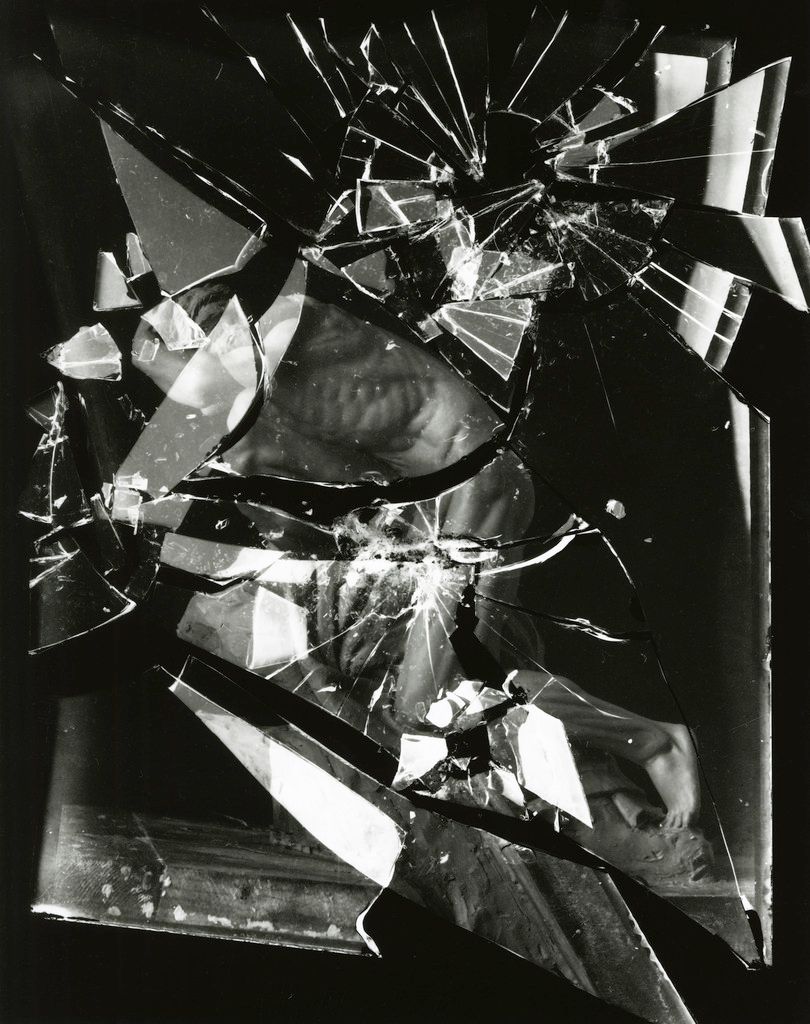VIA met with Randy Grskovic about 48 hours after he had arrived in Vancouver from Toronto. He described his first two days back, in what he calls his 'home city', as... awesome! Pun intended.
In that short period he had visited more exhibitions than many locals do in a month. Field Contemporary, Gallery Jones, Catriona Jeffries Gallery, Winsor Gallery, Equinox Gallery, the Mashup exhibition at the Vancouver Art Gallery, the Rennie Collection, and there were probably others as well. This was only the start of Grskovic's re-immersion into Vancouver's art-sphere.
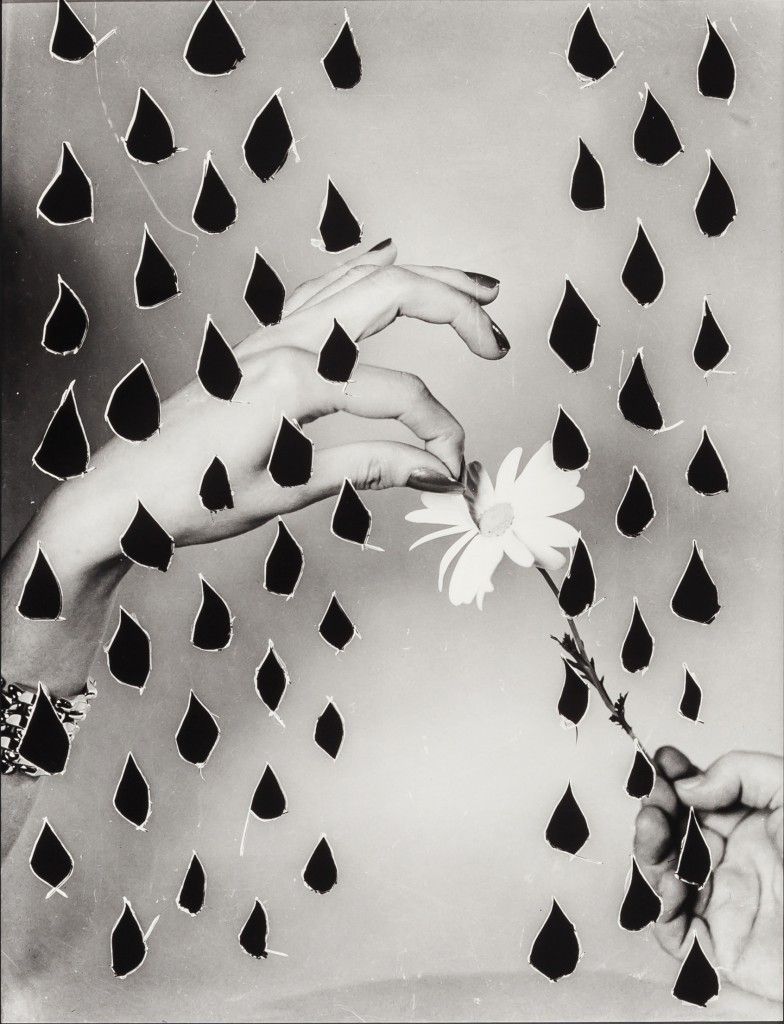
Grskovic was back in town to install work that is part of Capture Photography Festival this year. Capture has taken over nearly all of Vancouver's exhibition spaces during the month of April. The city is dedicated to photography right now, in a very big way! Grskovic met with VIA to discuss his practice, his exhibition at Burrard Arts Foundation, as well as, many other fascinating things. Judging by the energy that he exuded during his interview, there is no doubt that, post-interview and exhibition set-up, Grskovic went on to see another forty exhibitions before he left for Toronto.
Grskovic was an active artist, collaborator and exhibition curator in Vancouver for several years. In 2013, he opted for a change of scenery, job and city and moved to Toronto. So far, so good, he is busy acquiring a new perspective of the Canadian Art scene and immersing himself in darkrooms. His practice has grown and shifted. During our encounter, the many ideas and sensibilities that scatter across his art-making were fascinating to explore as he wove the story of his past into the present.
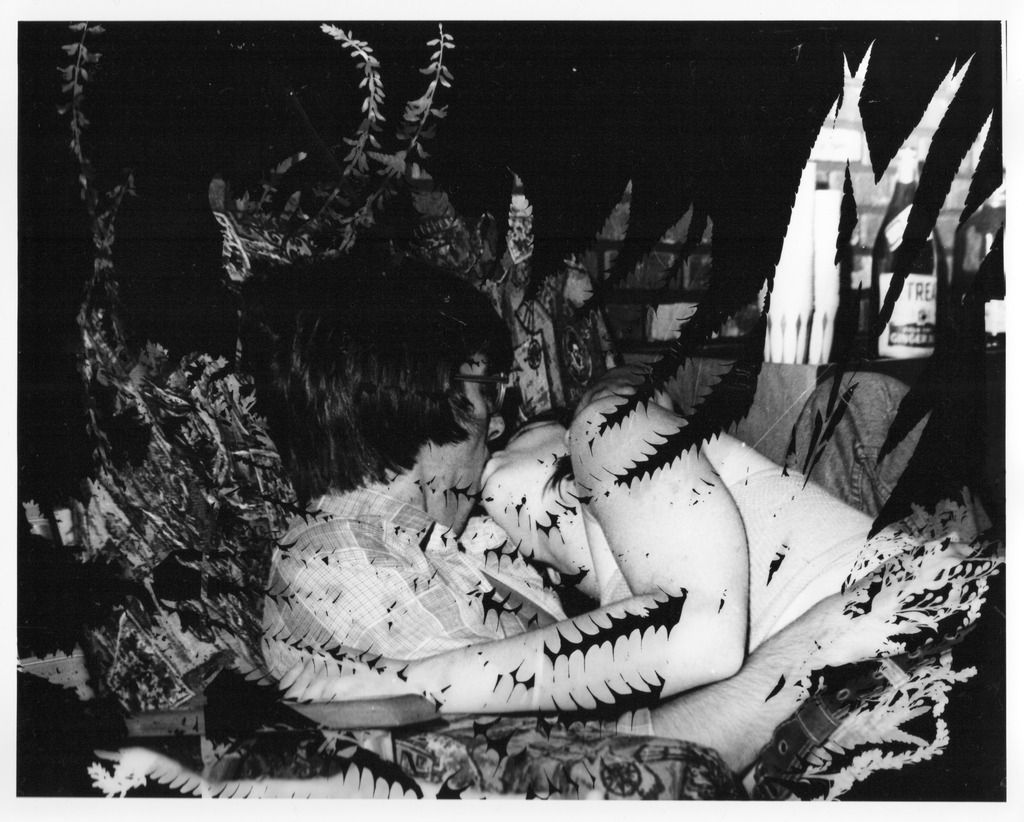
“I never worked in a darkroom until I moved to Toronto. My practice when I lived in Vancouver was collage. When I went to art school, I already knew how to draw and paint so I ended up taking video art because I wanted to learn a new skill. 'Young Randy' thought, if I am paying for school, I might as well be learning a new skill. So I worked a lot with video, then I realized that I really liked working with found imagery... I would build these video sculptures that would play these found images. As I finished school I couldn't afford to create giant video sculptures, nor did I have the space. Plus student loan payments were coming in. Out of the reality of economy I started making these machines out of paper and also collage works. I was focused on collage work for a long time. But for me, it wasn't just about the paper, it was also about the publications and their historical context."
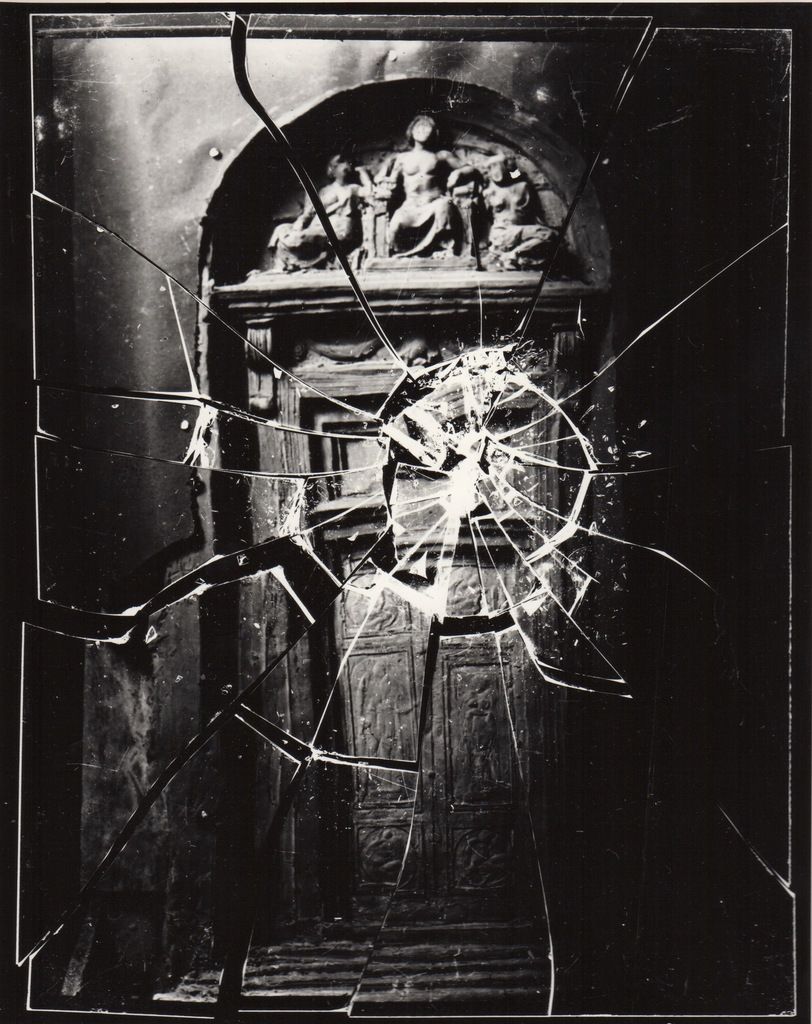
"I worked with magazines like National Geographic or Popular Mechanics, I would cut out machine parts and create these fantastic machines. Then I started thinking beyond that and what does it mean to have a published, printed image. Before an image appears in a publication there is already such a wealth of filters (editors) that it went through, and of course, I also thought about the distribution...I started creating what looked like digital collages based on the replication of the images I was using. It was really interesting, even the printed quality is different between magazine copies, some are more saturated, some have faded. You really notice this when you put them together. Even though they are meant to be identical copies, you see all this variation!”
“I'd also go on Ebay and collect additional editions of different magazines that I wanted more copies of. A lot of this doesn't show through the work but the process for me is so fascinating. I always hope that people have different access points through the work and then through conversations like this, I can expand on my motivations for making work... As an artist, I don't think that I make pieces, I hope that I make conversations”.

“Whilst I was looking on Ebay for magazines, I started finding negatives that interested me.” Grskovic enjoyed the contrast between the ubiquitous diffusion of publications versus the personal more intimate presence of these original negatives. Eventually Grskovic's negative searches led him to glass negatives and into the dark room at Gallery 44 in Toronto. The glass negatives are part of his newest work currently on exhibit at the Burrard Arts Foundation. The exhibition is titled Earth to Earth, Ashes to Ashes, Dust to Dust.
“In my older paper collage work, I'd scan it and post it on my tumblr. The collage actually looked better on the internet because it became a light box. I think that is a really interesting thing about contemporary art now, people are consuming so much more art through screens as opposed to books. The collage works become personal light box pieces for everyone who finds it. These works were interesting in real life, but they definitely acquired a strong online viewership through their bright online output.”
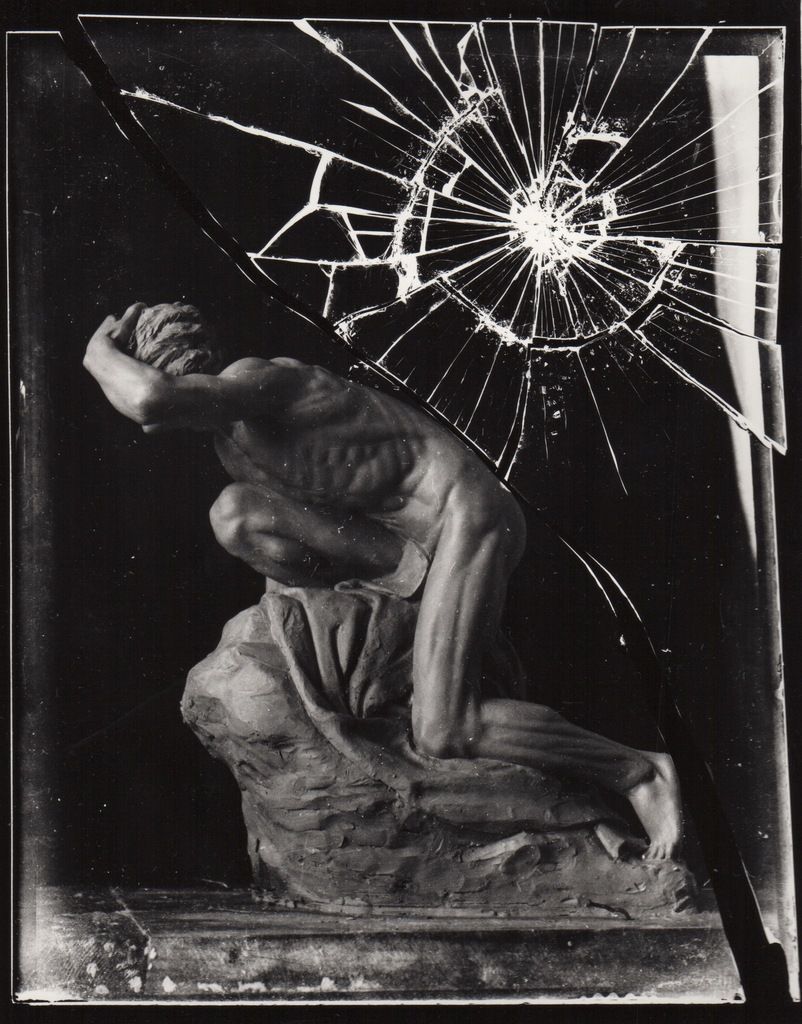
For Grskovic, the prints he has been working on perfecting in the darkroom were intended to evoke a different effect. Competing with the sexy backlit glow of the digital, he challenged himself to create prints where the analog is more beautiful and seductive than a light box. He may have succeeded, the work at BAF is pretty spectacular!
His selenium toned, monochromatic prints create intense and lush black voids which beguile the viewer. Many works in the show evoke movement through high-low contrast shifts, layering, cuts and breaks. The paper seems reflective and shimmers, it interacts with light sources as the viewer moves from one side of a work to the next.
Grskovic's art has always been process heavy, these new works are not any different. He is no stranger to spending hours trolling through negatives for sale and tirelessly triaging 'items to watch' lists on Ebay. Nor is he afraid to smash a century old original negative and then spend three days, and multiple chemical processes to create a print - only to discover that the process may need to be tweaked, then completely redone should the desired result not be attained.
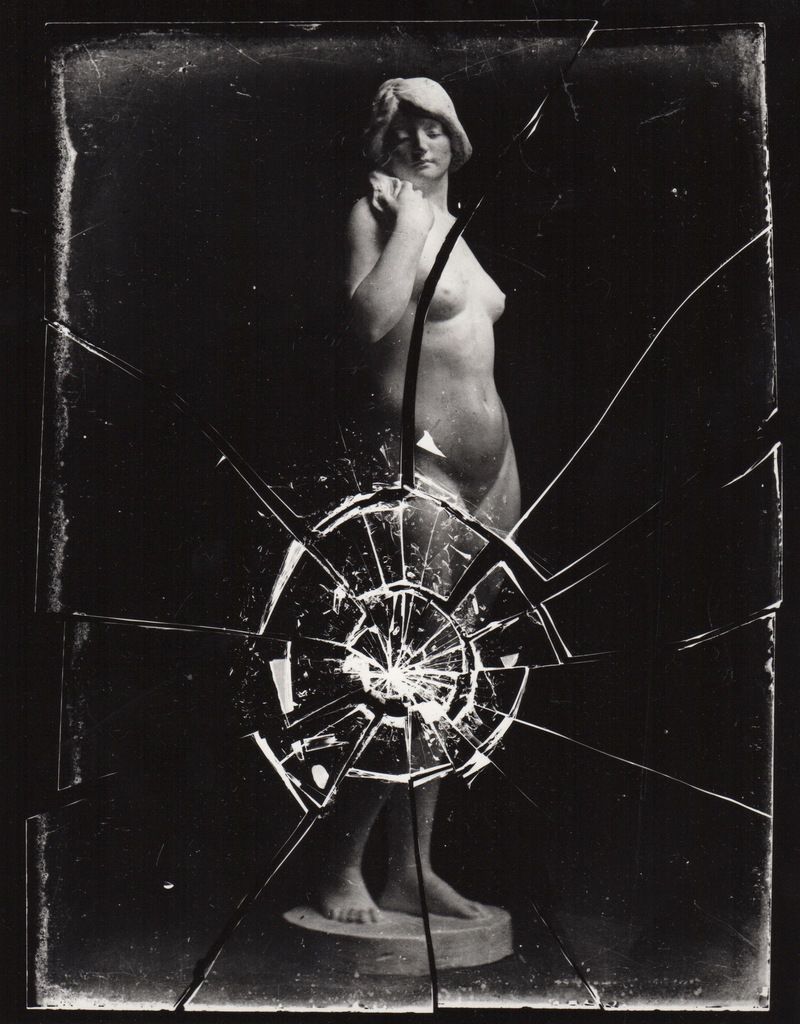
Through this type of process driven work, meaning and context slowly accumulates. Presentation and editing are key factors, but it is also important to note that a great deal of thought and investigation is spent throughout all of that time in which the artist perfects technique. Grskovic has considered so many angles as part of the context for this body of work. It informs and interprets the canons of art history, internet culture, documentation and capitalism.
The work also explores: memory, greek sculpture, portraiture, interpretation, mimicry, idolization, the role of the artist, the anonymity of the photographer, analogue process and so much more. Conceptually, the work splinters off like a rhizome in all directions.
“In the dark room, I am using light, water, paper and glass. I am using all of these natural materials that have been refined and perfected, it's scientific, it's chemistry. How do I bring this process to light? I am making work that I feel is strong conceptually and aesthetically... But I'd like to lift the curtain a little bit on the process... That makes me think of The wizard of OZ! Ha ha!”
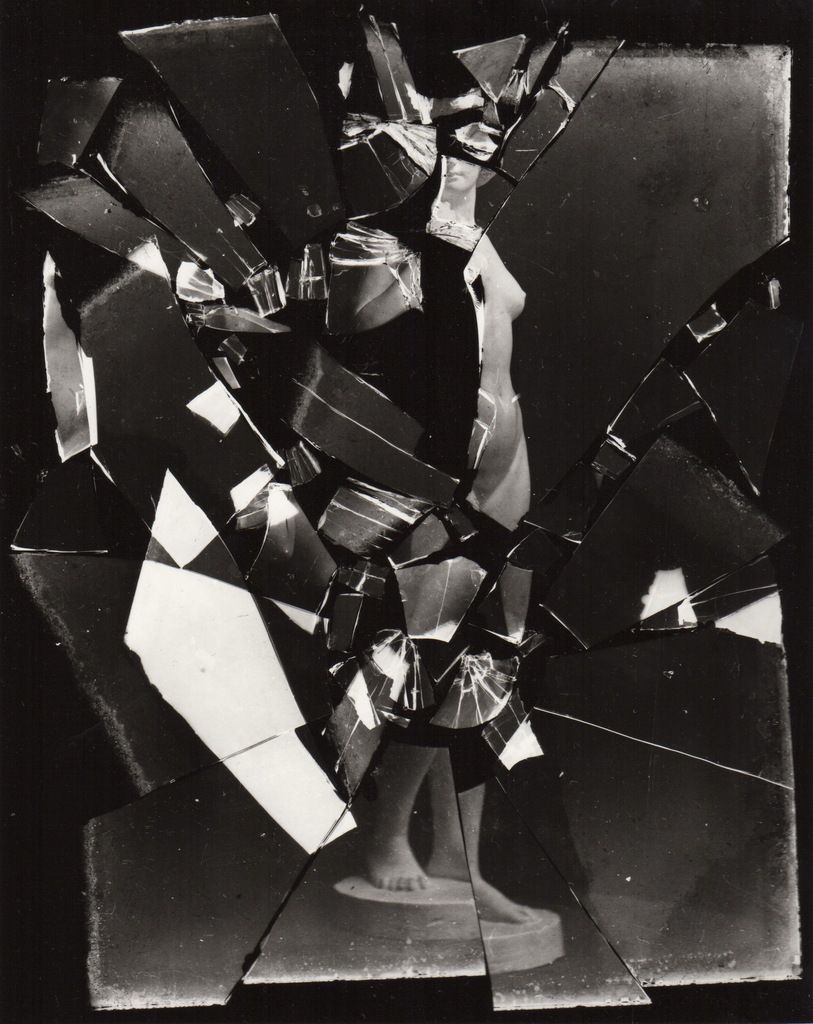
“My next goal, after this exhibition, will be to try to communicate more of the process behind the production of photography. I often use Instagram to document this process. I am hopeful that someone, one day, will mess up my photographic ones and zeros just as I've done to these negatives, or as I have done with collaged magazine imagery.” It would be an interesting to see what a mashup of a 'Grskovic smashup' would look like.
Grskovic's series work in the second annex room at the Burrard Arts Foundation space, delineates a Memory series that starts with a negative that is smashed once, with each successive printed iteration of the image it has been further smashed until it is obliterated. This suite of images is critical, not only to his exhibition at BAF, it also offers great insight into the artist's obsessive, process driven and image based practice. Perhaps to fully understand an image, it must be be taken apart, reconfigured and reassembled.
“Humans are always looking for patterns in things and trying to fill in the gaps, so a lot of my work is about approaching the viewer with holes so that hopefully they can fill in the gaps.”
Earth to Earth, Ashes to Ashes, Dust to Dust is on exhibit at Burrard Arts Foundation until May 14th. BAF is open Tuesday – Saturday noon-5pm.
More about Randy Grskovic: http://www.randygrskovic.com/
More about Burrard Arts Foundation: http://www.burrardarts.org/
More about Capture Photography Festival: https://capturephotofest.com/
